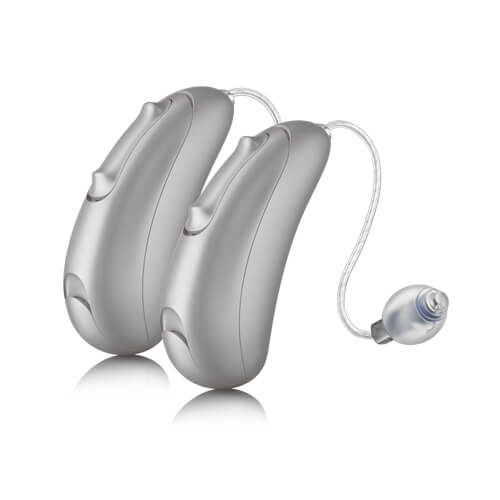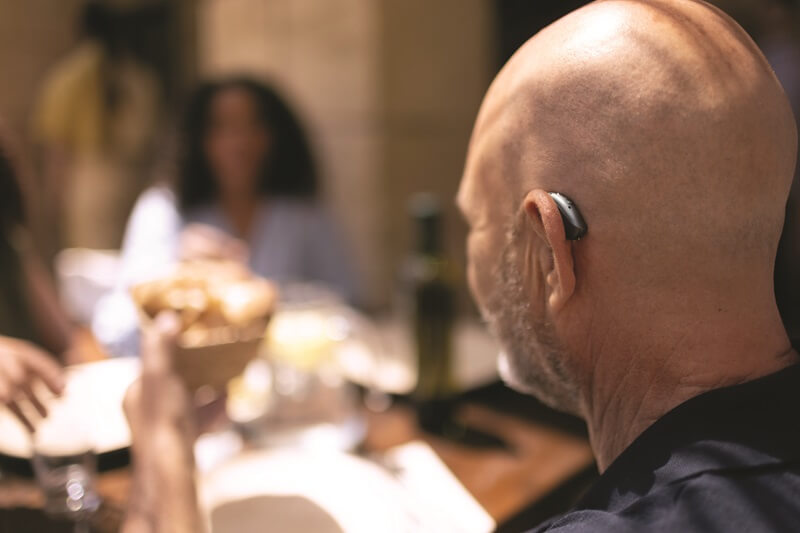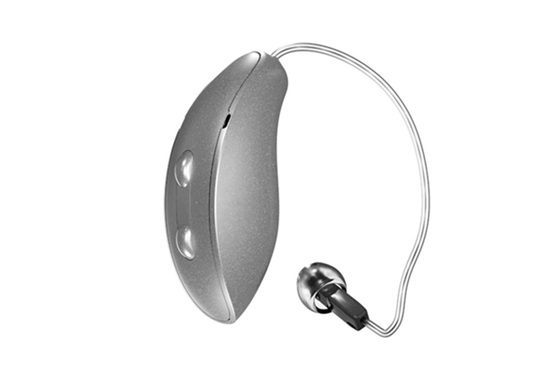
Behind-the-ear hearing aids
Behind-the-ear (BTE) hearing aids are a powerful and reliable option, designed to sit comfortably behind your outer ear.
If you've noticed a change in your hearing, we're here when you need us. Book your free hearing health check today.

The gift of hearing, without any of the hassle
Modern BTE hearing aids are small, discreet, and stylish – not the big, beige devices you might imagine. Available in a variety of colours to match your hair or skin tone, they offer excellent performance without drawing attention.
The key components, including the loudspeaker, are housed behind the ear. Sound is transmitted to the earpiece through a slim hook and small plastic tube, which sits in your ear canal. This helps keep the hearing aid secure while delivering sound clearly to your eardrum.
Benefits of behind the ear hearing aids
Small and discreet
Designed to sit neatly behind the ear.
Durability
Larger batteries provide longer battery life.
Comfort
Easy to handle, insert, and adjust.
Types of behind-the ear hearing aids
Closed fit
These use a fitted earmould that fills the outer ear. Although slightly larger than open-fit models, closed-fit BTEs are easier to handle. They also seal the ear canal, which helps reduce the whistling (feedback) some wearers may experience.
Open fit
These have a thin plastic micro tube that runs over the outer ear and into the ear canal. Open-fit BTEs are small, discreet, and avoid the "blocked" feeling sometimes associated with in-the-ear hearing aids.
Structure of a BTE hearing aid
All hearing aids share the same main components. A behind-the-ear model typically includes:
• Microphone: picks up sounds and converts them into electrical signals.
• Amplifier: increases the volume of those signals.
• Loudspeaker: converts the signals back into sound.
• Speech processor: tailors sound to your individual hearing needs and reduces unwanted noise.
• Volume control: usually buttons on the hearing aid itself.
• Ear hook: connects the hearing aid to the sound tube.
• Audio input: allows signals from other devices (an audio shoe may be required).
• Battery: either disposable (changed regularly) or rechargeable (lasting up to 24 hours per charge).
Other behind-the-ear (BTE) hearing aids
Micro-behind-the-ear models
Smaller than standard BTEs, these are suitable for people with mild to severe hearing loss. They're comfortable to wear and come in a wide range of styles and colours.
Receiver-in-canal (receiver-in-canal, or RIC)
The smallest BTE option, these place the receiver in the ear canal. Many also include modern wireless functions for extra convenience.




